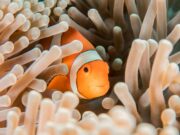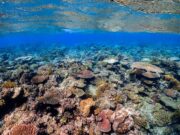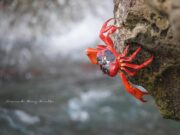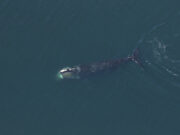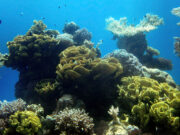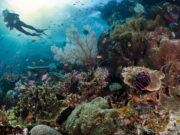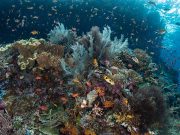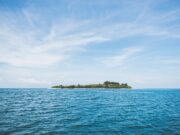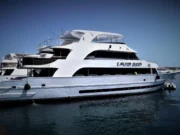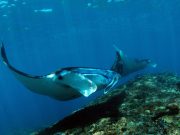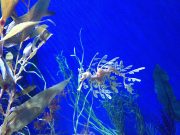Why Sustainable Seafood Matters
If you love the ocean, making smart seafood choices is one of the easiest ways to help protect it. Overfishing and harmful fishing methods are putting marine life at risk, reducing fish populations, damaging coral reefs, and threatening entire ecosystems. As scuba divers, we see the impact firsthand. But the good news is that choosing sustainable seafood can make a real difference.
Making sustainable seafood choices is easier than you might think. Trusted seafood guides and certifications can help you make informed decisions, so you can enjoy seafood without harming the ecosystems that make diving so incredible.
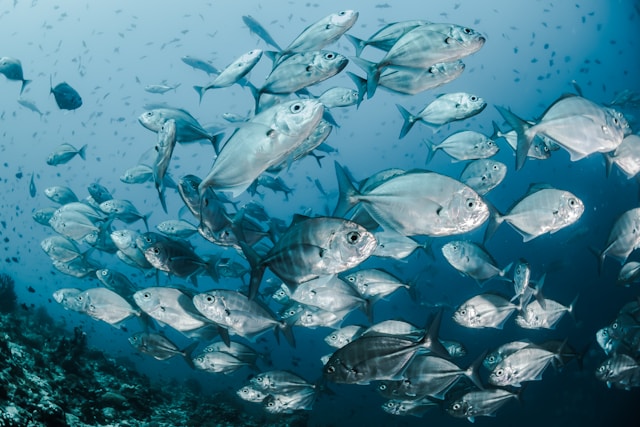
What is Sustainable Seafood?
Sustainable seafood comes from fishing and aquaculture practices that protect ocean life and ensure fish populations stay healthy for the future. This means following strict catch limits to prevent overfishing and using fishing methods that reduce bycatch—the accidental capture of turtles, sharks and other marine animals.
It also means avoiding harmful fishing techniques like bottom trawling, cyanide fishing, and blast fishing, which destroy coral reefs and seagrass beds. Beyond environmental concerns, sustainable seafood also considers ethical labor practices, ensuring fair wages and safe working conditions for the people in the fishing industry. By making informed choices, we can help protect marine ecosystems while still enjoying seafood responsibly.
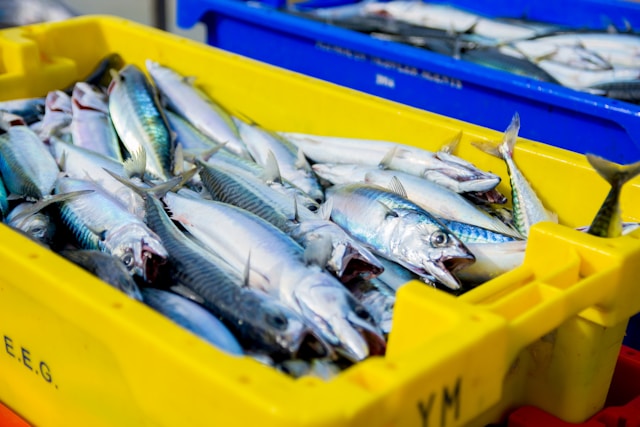
What Are The Impacts of Unsustainable Fishing?
Unsustainable fishing is a major threat to ocean life, causing fish populations to decline, damaging habitats, and disrupting marine ecosystems. Making informed choices about what we eat helps protect the delicate balance of life in the ocean. Here are some of the biggest environmental concerns tied to unsustainable fishing
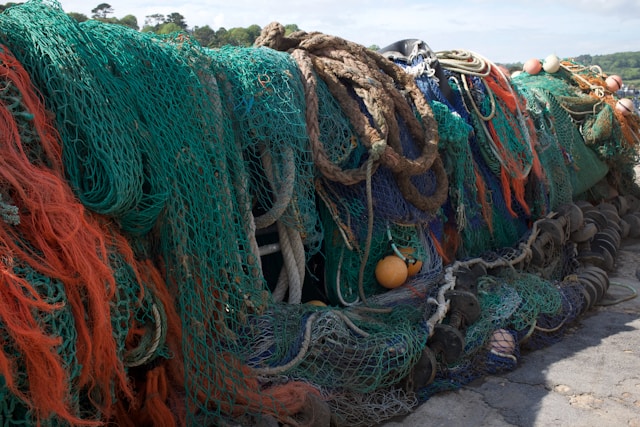
Overfishing and Depleted Populations
Many fish species are harvested faster than they can reproduce, leading to severe population declines. Popular species such as bluefin tuna, Atlantic cod, and some types of grouper have been overfished to the brink of collapse.
Bycatch
Fishing nets and lines often capture unintended species, including dolphins, turtles, sharks and seabirds. These creatures frequently die, which alters marine ecosystems and reduces populations of already threatened species.
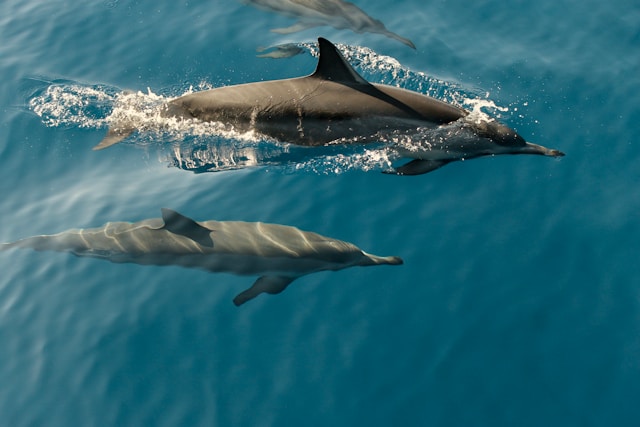
According to the International Whaling Commission, it’s estimated that at least 300,000 cetaceans (whales, dolphins, and porpoises) are accidentally caught and killed as bycatch every year.
Destructive Fishing Practices
Certain fishing techniques damage marine habitats, leading to long-term ecological harm. Here are the main fishing techniques to be aware of:
Bottom trawling involves dragging large weighted nets along the seafloor, destroying coral reefs, seagrass beds, and other critical ecosystems.
Dynamite and cyanide fishing, which are illegal in many countries, indiscriminately kill marine life and cause irreversible reef damage.
Gillnetting uses large mesh nets that capture marine creatures indiscriminately, including non-target species.
Purse-seining, while effective for catching schooling fish, can result in high levels of bycatch.
Longlining, which deploys thousands of baited hooks along miles of fishing line, often captures unintended species such as sharks, seabirds, and turtles.
Ghost fishing, caused by abandoned or lost fishing gear, continues to trap and kill marine life long after being discarded.
What About Farmed Seafood?
While aquaculture (fish farming) can be a sustainable alternative, some farms contribute to environmental harm. Poorly managed fish farms pollute coastal waters with waste and excess feed, and some use wild-caught fish as feed, worsening overfishing.
How to Make Sustainable Seafood Choices
Finding sustainable seafood can seem overwhelming, but several tools make it quick and easy. Here are the best ways to ensure your seafood choices are environmentally friendly:
1. Look for Certification Labels
Certifications are one of the easiest ways to confirm whether seafood is sustainably sourced. Some of the most reliable labels include:
- Marine Stewardship Council (MSC) – The MSC Blue Tick certifies wild-caught seafood from sustainable fisheries. Look for the blue MSC label on packaged seafood in supermarkets and restaurants.
- Aquaculture Stewardship Council (ASC) – This label ensures responsible fish farming practices that reduce environmental impact.
- Best Aquaculture Practices (BAP) – This certification covers farmed seafood and assesses factors like water quality, feed sourcing, and worker conditions.
2. Use Sustainable Seafood Guides
Many organizations provide seafood guides that help consumers make informed choices. These guides categorize seafood into “Best Choices,” “Good Alternatives,” and “Avoid” lists based on sustainability factors.
The World Wildlife Fund (WWF) offers country-specific seafood guides, helping consumers find sustainable options based on their location. Seafood Watch (USA) provides recommendations for sustainable seafood in the United States. The Good Fish Guide (UK) offers recommendations for UK consumers based on fishing methods and species status.
3. Support Restaurants and Markets that offer Sustainable Seafood
When dining out or shopping for seafood, choose places that prioritize sustainable seafood. Many restaurants and fishmongers proudly display MSC or ASC certifications. Don’t hesitate to ask where their seafood comes from!
4. Diversify your Seafood Choices
Many commonly eaten fish species are overfished, but lesser-known species are often more sustainable. Instead of tuna or cod, try mackerel, sardines, or farmed mussels, which tend to be more environmentally friendly.
5. Reduce Seafood Consumption
While choosing sustainable seafood helps, reducing overall seafood consumption can have an even greater impact. Incorporating more plant-based proteins or alternative seafood options, like lab-grown seafood or responsibly sourced plant-based seafood substitutes, can contribute to conservation efforts.
6. Spread Awareness
As divers, we have firsthand experiences that can inspire others to care about marine conservation. Sharing knowledge about sustainable seafood, supporting conservation organizations, and advocating for responsible fishing practices can make a difference.
7. Take your Knowledge Further
If you’re passionate about protecting marine life, consider expanding your knowledge with SSI’s Blue Oceans program or Marine Ecology course. These courses provide valuable insights into ocean ecosystems and how divers can play a bigger role in marine conservation.
Taking one of these courses will not only enhance your dives but also empower you to make meaningful changes—both in the water and in your everyday choices.
Is There A Future for Sustainable Seafood?
The demand for seafood continues to grow, making it essential to support fisheries and aquaculture operations that prioritize sustainability. Governments, environmental organizations, and responsible consumers all play a role in shaping a future where ocean life remains abundant and diverse.
With improved technology, sustainable fishing innovations, and global awareness, we have the opportunity to protect marine ecosystems while still enjoying seafood responsibly. By making sustainable choices, we contribute to a world where the marine life we admire underwater continues to thrive for generations to come.
This article was written by Kathryn Curzon, a dive travel writer for SSI.

